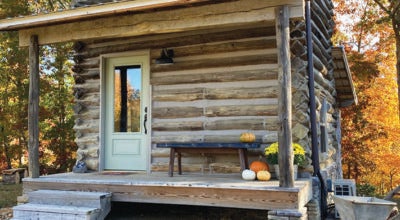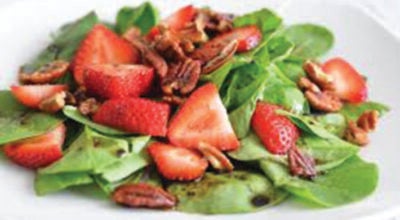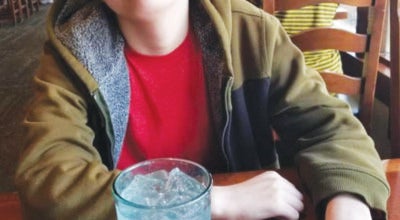The Literary Corner: Renegade Writer’s Guild
Published 9:56 am Thursday, December 5, 2019
|
Getting your Trinity Audio player ready...
|
“Love, Family, Tradition”
By Julie Terry Cartner
Christmas music filled the house, intermingling with the familiar scents of nutmeg, cinnamon and evergreens. Sounds of children laughing and talking, along with shrill squeals of excitement, added to the Christmas mix as a variety of munchkins helped decorate Nana’s house. Here a flash of tinsel, there a stream of red, green and blue lights, and everywhere the green of evergreens in the form of trees, wreaths, and garlands proclaimed the Christmas season has arrived.
Now a beloved holiday tradition, almost more important to the family than Christmas day itself, the grandchildren gathered at Nana’s house on the first day of Advent to decorate the house and trim the tree. Actually, all the children who were old enough would arrive the night before and have a sleepover including Christmas movies and lots of popcorn and hot chocolate. The next morning, joined by the smallest children and at least some of the parents, they would go to church together, the same church where Nana and Pop were married almost fifty years before, the same church where most of the children’s parents had similarly spoken their wedding vows, and the same church where Nana took them any time they were visiting her. After church they’d go home to a delicious Sunday dinner; then the decorating would commence.
Holly and ivy were woven together on the fireplace mantel, the staircase and around the doors. The children, learning the Irish traditions from their Nana, vied to find the sprigs of holly with the most berries since that was supposed to bring good luck in the following year. The older children, now teenagers, hung mistletoe from every conceivable doorframe and ceiling; after all, you never knew when true love would wend its way into the house, and none of them wanted to miss the opportunity for a magical Christmas kiss.
And, of course, a large candle would be placed in the front window to help guide Mary and Joseph on their journey to Bethlehem, another tradition Nana brought with her from, as she called it, the Old Country.
The smaller children set up the wooden Nativity scene on the low table by the front door while the older ones carefully unwrapped and placed the more fragile ceramic creche on the mantlepiece interspersed with the greenery. Meanwhile familiar carols filled the house, accompanied by the sweet voices of little ones, who may not know all the words, but they were clearly filled with the joy of the season. Cookie dough awaited them in the refrigerator, along with icing, sprinkles and all sorts of other decorating tools, ready to be made into trees, stars, bells and Santa’s as soon as the decorating was done.
Smiling, Nana sat back in her chair, holding her youngest grandchild, six-month old Bridget, who looked on with a rapt expression as Christmas exploded around her. After the older children strung the lights on the tree, each child carefully unwrapped ornaments, one at a time, and hung them carefully on the tree. Rich in memories, each ornament told its own story: many made in school or Sunday school by little children, another a present from a dear friend, still another as a souvenier from a fun-filled trip to New York City, others to commemorate first Christmases, five, 10, 20, 30-year anniversaries and the like, and still others gathered over the decades of life.
Finally, all that was left was the box. Nana’s oldest, Michael, handed the box to Nana, saying, “Here, Nana, it’s your turn.” Slowly lifting the lid, Nana reached in, pulling out a felt-wrapped bundle. Gently unwinding the fabric, soon a porcelain angel emerged, so old and so fragile, only Nana dared touch it. Everyone sighed at the beauty, both in the ornament itself and the love the memories evoked. For Nana’s beloved Thomas had given her this ornament their first Christmas together over fifty years ago. They married on Christmas Eve, and at midnight he gave her the angel, telling her, “I can’t always be here to watch over you, but when I’m not here, this angel will be your protector.” Although Thomas had been gone for several years now, his love, symbolized in the angel, still shone brightly in the ceramic face. Love, Family, Tradition, Nana thought as she lovingly placed the last ornament on the top branch of the tree; what else do we need.
“Beatrice”
By Marie Craig
I wrote once about my van that I named Clara in honor of my wonderful piano teacher and friend, Clara McDougle. I would be remiss if I didn’t tell you the origin of the name of my current car. Since it’s bright yellow, I thought of bumble bee or just bee. Bee reminded me of Beatrice, so that became her name.
A second reason for the name Beatrice comes about because of my Girl Scout leader for nine years, Beatrice Kaplan. She had a daughter my age who was also my friend. I visited in their home several times. Mrs. Kaplan was a marvelous influence in my life. She made scouting fun and challenging. We accomplished many events and earned many proficiency badges which led to our troop becoming the first in the county to be awarded Curved Bar, which was equivalent to Eagle award in Boy Scouts. I still have all my scout patches, badges, and photographs, which I treasure.
She was strict and thorough in her planning and in leadership at meetings. After each of our many parties, picnics, camping trips, and socials, she always led a discussion where we did an evaluation of what went right and what went wrong. I totally learned the meaning of the word “evaluation”.
I was shy, and she encouraged me to join in and to become a leader. My mother is, of course, my first female role model, but Beatrice Kaplan would come next. I hear myself repeating many of the pragmatic words that she used. I kept in touch with her for years after high school and visited her and her husband near Washington, D.C. after their move. She wrote me letters of encouragement as I became a wife and then a mother. It was a sad day when I received a letter from her husband that she’d had a stroke. She died a few years later.
Every time I talk to my car, and address her as Beatrice, I’m reminded of this great friend and leader in my life.
“Family Roots”
By Gaye Hoots
A log cabin built in 1774 has been relocated to Central Park in King, North Carolina. The cabin was deconstructed and reconstructed in the park by the Muttenz Descendents. My grandmother, Bessie Elizabeth Spainhour, descended from Johan Jacob Spaenhauer, whose family immigrated from Muttenz, Switzerland. His parents immigrated in 1740, and Johan was born in 1750 near Yorktown, Pennsylvania. The earliest record of the Spainhour family was a marriage record from 1513.
Johan’s family moved from Yorktown to be near the Moravian settlement of Bethania, North Carolina, for protection from the Indians in 1763. Johan married Anna Catherine Volck, now spelled Fulk in 1773. The next year they purchased a tract of land in what is now Stokes County, and built a two-story cabin in which they raised thirteen children.
Many of the early settlers in this area were from the Rhine River area of Switzerland, France, and Germany. Anna Catherine Volck’s father, Andreas, immigrated from Germany. My grandfather, Robey Riley Fulk, is descended from Andreas. Both my grandparents descended from Johan and Anna Catherine.
I was introduced to Verna Spainhour Brewer by my daughter. Verna is a member of Muttenz Descendents, Inc., a non-profit responsible for reconstructing and preserving the cabin. They have a Facebook page and a website with a list and history of the Muttenz Descendents. Verna has the keys to the cabin. She lives near the cabin, and her phone number is on the cabin door. The web site is www.tng.muttenzdescendents.org.
The cabin was larger than I expected it to be and sturdily constructed. The second story was full height, not just a sleeping loft. It was hard to imagine raising thirteen children under those circumstances. Anna was a midwife and lived to be sixty-two years of age. Johan died at age seventy-two. They had sixty-five grandchildren, who raised families in surrounding communities.
I stood in the cabin that was the origin of both my grandparent’s families. My grandparents were a credit to this Swiss-German family. My grandmother, Bessie, was the oldest girl in her family, and at age seven, when her mother had to be hospitalized and never returned home, Bessie and her five-year-old sister, Annie, took on the chores of cooking, house cleaning, and caring for their three-year-old sister.
My grandmother was only sixteen-years-old when she married my grandfather, who was eight years older. Annie married grandpa’s brother about a year later. The two families remained close to each other for their entire lives. Their children were double first cousins. My grandparents moved to a tract of land he owned and later built a house there. My grandmother lived in that house for seventy-two-years and died at the age of ninety-nine-years-old. They raised five boys and a girl, my mother, Ila Elizabeth Fulk. They sent three sons to fight in WW11; only two of the sons returned home.
My great-grandmother on Bessie’s side was Sarah Butner. She married Oliver Alexander Spainhour, who operated Spainhour grist and lumber mill. Her family descended from Adam Butner of Old Salem. There is a house there that bears his name. He operated Salem Tavern for many years. The Moravians were not allowed to drink or frequent the tavern, but they operated it for those passing through the town and made a profit.
Adam Butner’s daughter, Hattie, married the grandson of the Clemmons family that the town of Clemmons, North Carolina is named for. Hattie’s husband ran a stagecoach line. One of his most expensive stagecoaches was named The Hattie Butner for his wife. You can view this in a building near the stoplight in Clemmons on Hwy. 158.
Tracing my family roots is a meaningful journey for me. It makes me feel more connected to family and gives me a greater appreciation for the life they helped shape for me.
“First Chance in the Limelight”
By Shari Keller
I had practiced my violin fervently for the past week in preparation for the upcoming gala to be held at the museum. The director encouraged us to play as if we had angel wings, our feet barely touching the ground. Our trio was to move slowly through the guests playing softly, as not to overshadow important conversation regarding donations. This afternoon we were to practice , and I was running late as usual. Grabbing my coat, I ran out the front door, locking it behind me and was down the steps to the sidewalk before realizing I had no violin case in my hands. I bounded back up the rock steps, catching my right toe on the overhang of wood from the porch. Before I could grasp what was happening, my right foot twisted causing searing pain up my calf, and I threw both hands out to brace myself from the fall and smashing my face. My neighbor from across the street was blowing leaves, saw the freak accident and came running. He quickly assessed that I must go to the Emergency Room right away. In agony I agreed, mentally picturing my long anticipated entrance in the black velvet dress, violin on my shoulder and white cast on my right foot, dragging like a ball and chain as quietly as possible so not to disturb the other angels.
RWG Literary Corner
For more information on Renegade Writers Guild, visit www.renegadewritersguild.wordpress.com.
Submit a favorite memory of life in Davie County. Story should be typed and not more than 250 words. Please include your name and phone number or email address. RWG retains reprint rights. Email to lhb1@yadtel.net.





